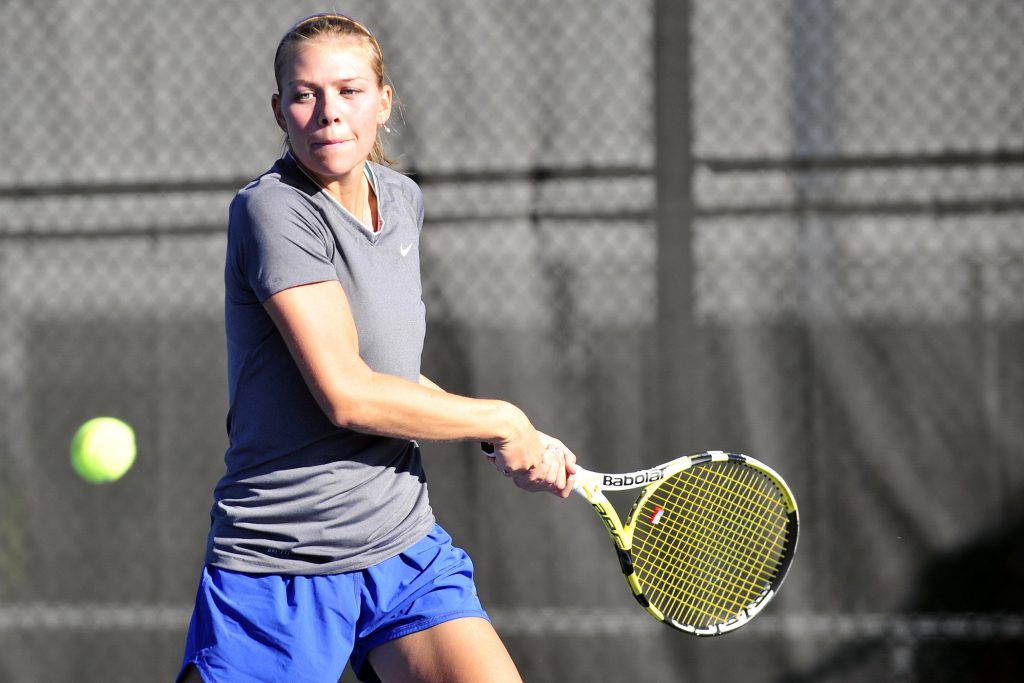This post was contributed by Emmanuel Ducrocq, a PhD student in Birkbeck’s Department of Psychological Sciences. It is about a paper based on research he and his supervisor (Professor Naz Derakhshan) did in collaboration with Dr Mark Wilson and Dr Samuel Vine, and which is published today in the Journal of Sport and Exercise Psychology. Emmanuel tweets at @manuduc and Professor Derakhshan at @ProfNDerakshan
 Successful performance in sports is usually evaluated in terms of technical, tactical or physical abilities. However a crucial index of performance is the ability to perform under stress and high pressured situations. This is especially relevant sports demanding a high level of attention, such as tennis, golf, archery or shooting.
Successful performance in sports is usually evaluated in terms of technical, tactical or physical abilities. However a crucial index of performance is the ability to perform under stress and high pressured situations. This is especially relevant sports demanding a high level of attention, such as tennis, golf, archery or shooting.
Recent research in sports psychology has shown that a key factor responsible for poor performance in sports under pressure is the inability to focus on what needs to be done and reduce distraction. This is often referred to as attentional control: the ability to resist distraction and attend to task goals efficiently. If athletes can’t exercise attentional control efficiently then they cannot plan and execute a skilled movement flexibly. The pressure to perform well, increases anxiety and so maintaining attention focus on task goals becomes exceptionally challenging giving way to worries, and doubts about performance as well.
Attentional control has usually been targeted in sports by trying to promote specific gaze behaviours which has proven to show benefits to motor performance in sporting tasks such as golf or basketball. Crucially though, while this method is useful, it hasn’t been able to identify the underlying mechanisms responsible for sports improvement.
In a series of three exciting studies we wanted to improve motor task performance and we specifically focussed on tennis, which requires good attentional control to flexibly resist distraction. To this end, we trained inhibitory control using a computer-based training task to see how it could improve performance in a tennis task.
In the first experiment, participants were allocated to a training or control group and underwent six days of training on a visual search task that included task-irrelevant distractors requiring inhibition (training) or contained no distractors (control). Performance was measured pre- and post-intervention using an antisaccade task measuring distractibility. We found that training elicited a near-transfer effect; as performance on the antisaccade task was improved in the training group, and not in the control group. This was important to establish, as it showed that training on the visual search task could improve inhibition on another unrelated task.
In the second experiment training on the same paradigm showed transfer benefits on an attentional control index that we validated for tennis performance. Tennis players were assessed on a return of serves task and we found an initial far-transfer effect of training. Participants in the training group displayed an enhanced ability to focus on the ball around the time of contact with the ball.
The third experiment pushed the boundaries of this work further by assessing the potential effect of the training task on an objective gaze measures of inhibitory control during performance of a tennis task. Participants’ pre and post intervention performance was assessed on a volleying task performed under pressure while their gaze behaviour was recorded. We found a substantial effect of training on tennis performance when levels of pressure were elevated. Transfer effects of training were also observed on a specific gaze behaviour index of ‘inhibition’ in the field, confirming the mechanism by which training protected participants against the negative impact of anxiety.
Taken together, we have shown that a simple computer-based training task that reduces distraction and improves attentional control can have direct transfer benefits to tennis performance under pressure. This can obviously have great implications for improving motor performance in any competitive sport that needs to be performed under pressure.
